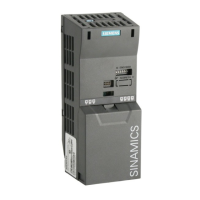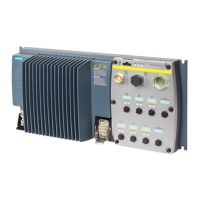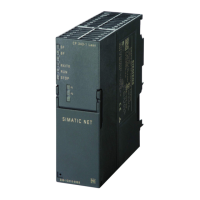Functions
8.18 Fail-safe functions
Control Units CU240S
8-110 Operating Instructions, 11/2006, A5E00766042B AA
Caution
After an STO or LSTO it is possible (but almost unlikely) that the field generating
components become faulty in a way that they will generate one single rising edge of a
rotating field causing the motor to jerk for a defined maximum electrical angle of 60 °.
The resulting rotating angle at the motor shaft is smaller than the maximum electrical
angle due to inertia and the number of pole pairs.
Note
A latched safe torque off is always initiated by a safety fault condition within the drive.
Therefore, the drive always performs a forced dynamisation procedure before it is
allowed to restart.
8.18.4 Safe Stop 1
Data
Parameter range: P0003, P0010
P09761
P9603/P9803, Bit 02, Bit 03 or Bit 07 (PROFIsafe)
P9680/P9880
P9681/P9881
P9682/P9882
P9799/P9899/P3900
Warnings A1691, A1692, A1696, A1699
Faults F1600, F1616
Description
In contrast to STO, the actual speed of the motor has an influence on the behavior of the
SS1 (Safe Stop 1) function. When SS1 is initiated the speed of the motor is detected, if the
speed of the motor is lower than the minimum speed for standstill detection set in P9682 and
P9882, the STO function is initiated immediately to bring the motor to a standstill. If the
motor speed is higher than the minimum speed for standstill detection, then the motor is
slowed down using the safe braking-ramp time set in P9681 and P9881. See figure below.

